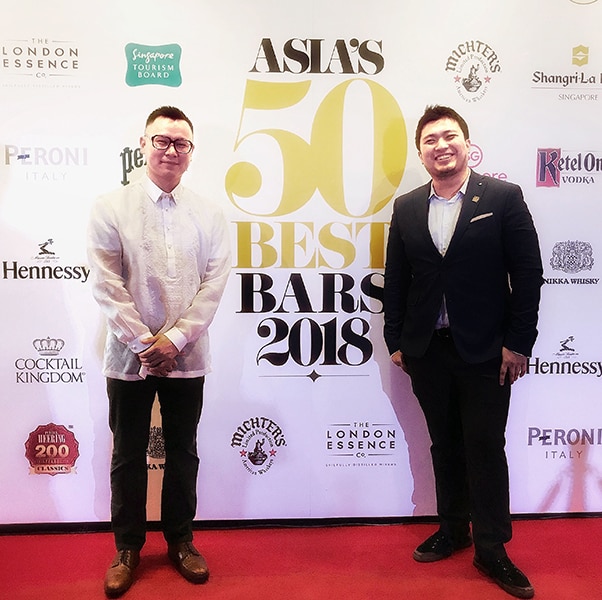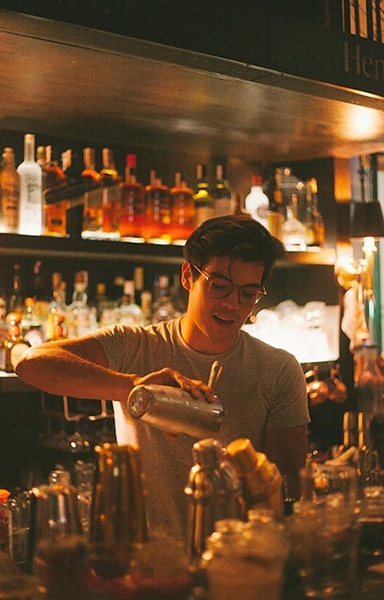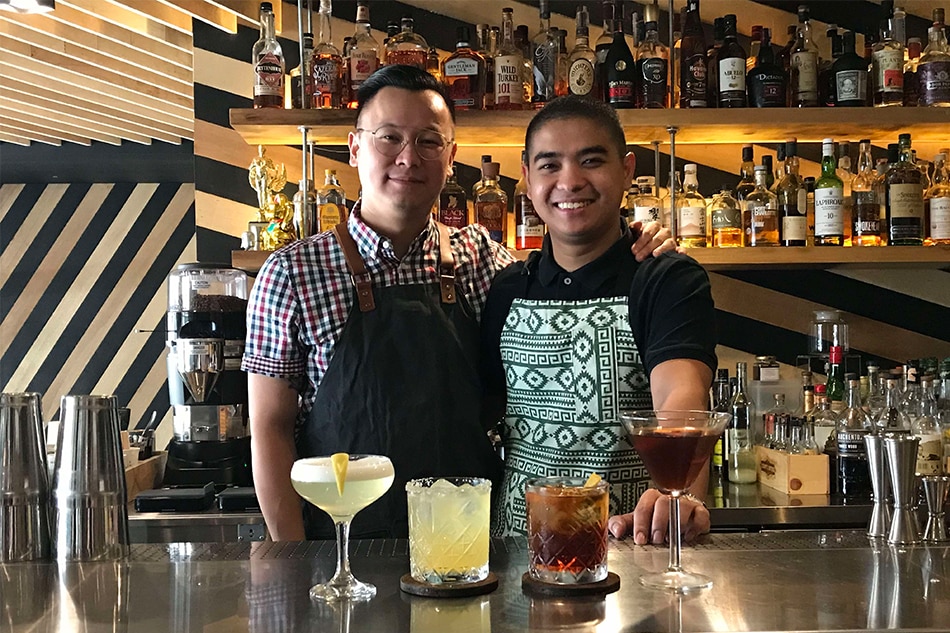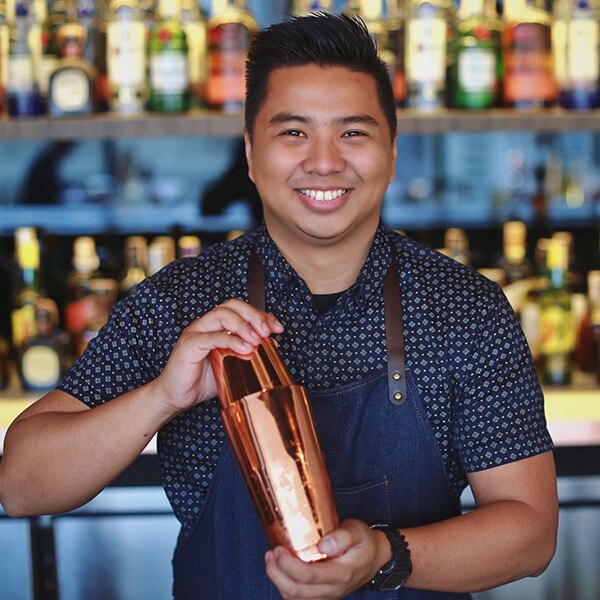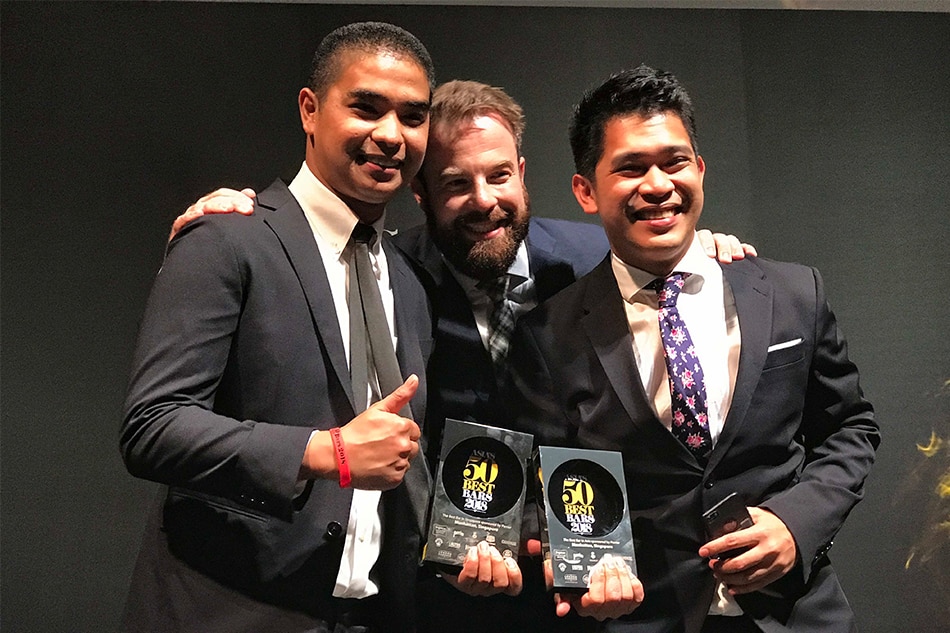Expert opinion: Why Pinoys are among the best bartenders in the world
ABS-CBN NEWS
Cyrene Dela Rosa
14 September 2019
Take a cruise or drop by a bar in most any part of the world, and chances are the bartender is Filipino. So why are Filipinos ruling the global bartending scene and what makes them so good? The industry experts weigh in.
It has been a long time coming, but Filipino bartenders are now globally recognized as among the best in the world, not only in the Asia-Pacific region, but in the rest of the world, too. perhaps this became most apparent during the Asia's 50 Best bars ceremony in 2018 when Filipinos took the spotlight, with the Makati-based The curator taking the no. 25 spot, and most notably, with two Filipinos, Cedric Mendoza and Gabriel Carlos, helping Manhattan Bar in Singapore snag its no. 1 position. these are indeed glory days for Filipino bartenders worldwide.
I asked some of the most respected bar industry people to share their thoughts on what makes Filipino bartenders so sought after abroad and here is what they revealed:
I asked some of the most respected bar industry people to share their thoughts on what makes Filipino bartenders so sought after abroad and here is what they revealed:
Jericson Co
Owner and bartender, The Curator, Edsa Beverage Design, YKW at the Grid, and 205 (in photo, right, with David Ong)
It’s a mix of being raised in despair and family. These couple of generations of Filipino bartenders were kids in the 1990s and 2000s. We grew up with such ingrained structural negativity but were also cocooned by our families and culture who tried to make the best with what was available. So you have people that were familiar with washing away whatever rough situation was happening outside with hospitality, all the while knowing how to empathize with how tough it is outside.
Erwan Heussaff
Owner, Yes Please, Revel, The Island
Filipinos have an innate knack for hospitality. We always want to make sure that our guests are comfortable, well fed, and happy, whether in our own house or our place of work. Pair that with our ability to adapt to foreign environments and our capacity to learn, you’ve got a strong base for a job that requires you to be precise, efficient, and creative, all in front of your customers. Bartending looks like a laid-back job from the outside, but it’s a tough industry to be in. Filipinos are able to smile through it and make it look easy.
David Ong
Co-Founder and Managing Partner, The Curator, OTO (in photo, left, with Cedric Mendoza)
We’ve always thought that Filipinos make great bartenders in that half of the job is naturally inherent to us—that is, being hospitable. Thus our efforts to push our own bartenders at The Curator and OTO by guiding them to be 1% better than yesterday. If you give Filipinos the opportunity to better themselves (technique, knowledge, experience and wisdom), not only within the Philippines but abroad, then the sky is really the limit. Just look at Gab, Cedric, Yoma, Bryan, Mel, Davide, Joe, Gerry, Jake, Jon, and Kervin (all homecoming Filipino bartenders participating in the first Manila Cocktail Festival).
Holly Graham
Managing Editor of DRiNK Magazine Asia
I agree that Filipinos are good bartenders as they tend to be friendly and outgoing and hospitality comes naturally to them. I’ve seen many Filipinos do well outside the Philippines, including here in Hong Kong such as my dear friends Jake Mendoza at The Sea by The Old Man and Bryson Rivera of Bar Q88 who is also the founder of Circuit Square Tattoo (and has inked two designs on me!). Over in Singapore, Manhattan has seen some great Filipinos but I’m also really happy to see a strong community of female bartenders growing within Manila.
Rian Asiddao
Brand Ambassador, Diageo Reserve and Diageo Philippines Inc.
There are many traits us Filipinos have that make us really good in the hospitality industry. We excel in culinary, service, and in bartending. First, we are very hospitable and service oriented people. We love to host people, show them around, offer food and drinks, and we love to make people smile. Second, we are flexible enough to do many things, from the dirty work such as cleaning the glasses, dishes, and even going to the market to purchase ingredients, to admin work such as inventory, stock management, etc. Third, we are very open with ideas, and we are good in levitating an idea into something magical. And lastly, we are very charming and friendly, easy for other people to be comfortable with us. All these traits make us great in hospitality and because of that, we have so many amazing bartenders here and across the globe.
Giancarlo Mancino
Founder, Mancino Vermouth & Bar and beverage consultant for Rosewood Hotels
Based on my over 15 years of experience working with Filipino bartenders, I can say that they offer a complete package. Aside from their good command of the English language, most of them also have the ideal personality suited for the bar world. Compassionate, always smiling, and polite. And to top that, also willing to work hard.
Philip Bischoff
Beverage Manager and Beverage Ambassador APAC, Four Seasons Hotel Bangkok at Chao Phraya River (in photo, center, with Cedric Mendoza and Gabriel Carlos)
From my recent experience in Singapore, I can share that I have experienced amazingly talented, passionate, and committed bartenders at Manhattan Bar (No. 2 Asia’s 50 Best Bars 2019 and No. 3 World’s 50 Best Bars 2018). Clearly, Cedric Mendoza (formerly with Manhattan Bar, currently at Grain Bar, Sydney) and Gabriel Carlos (Manhattan Bar) are amazing examples of how passion and commitment can drive a story of success, but also taking the chance, when seeing one and realizing that it needs hard work to be successful. Great to see talents like Kelvin Saki rise as well, being driven by passion and the drive to learn and get better every day… It’s amazing to see how passionate people like David Ong are supporting and driving the local bartending scene and to be supportive as much as he can. I believe it all depends on every single one’s commitment and willingness to learn and being eager enough to get better. Somehow, I also trust it has to do with the environment and platform where talents are identified and supported.
